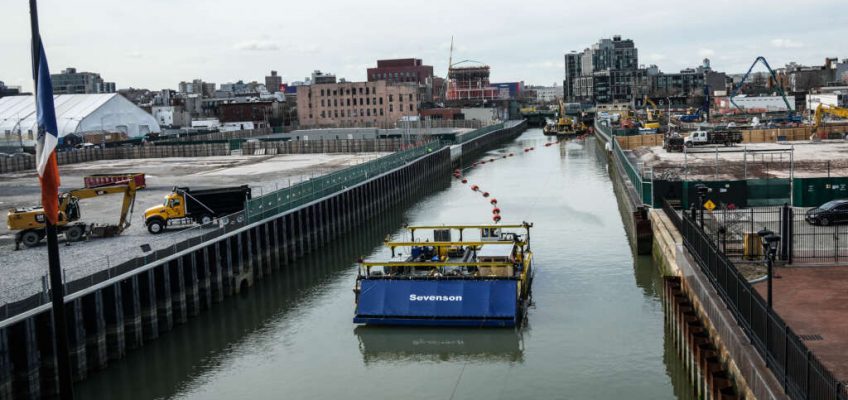By ROB GILLIES and MARIA VERZA
MEXICO CITY (AP) — Canadian Prime Minister Mark Carney met with President Claudia Sheinbaum Thursday on a two-day visit to Mexico focused on how to diversify trade under U.S. tariff threats and keep the most important free trade agreement in the Western Hemisphere alive in the lead up to negotiations next year.
Related Articles
Turned off by Trump rhetoric, Canadians cancel trips. New England pays the price
US once again vetoes Security Council resolution demanding immediate Gaza ceasefire, hostage release
In coastal Ghana, female oyster farmers try to save an old practice threatened by climate change
Women’s rights activists rally in Belgium fearing US plans for birth control supplies
Warsaw turns to Ukraine for drone warfare expertise after Russian drones enter Polish airspace
The United States-Mexico-Canada trade pact, or USMCA, is up for review in 2026. More than 75% of Canada’s exports and more than 80% of Mexico’s go to the U.S.
The two leaders shook hands and strode side-by-side into the presidential palace in Mexico City, where Canadian Sen. Peter Boehm said the leaders were slated to commiserate about U.S. President Donald Trump.
“What are they hearing from the Americans, what we are hearing. It’s an opportunity to talk about how to handle the U.S. administration going forward,” Boehm said.
Canada-Mexico trade by maritime routes
Sheinbaum said they want to increase bilateral trade in different sectors through the free-trade agreement and to do so through maritime routes – which would avoid those goods having to pass through the United States.
“The idea is to strengthen trade through ports between Canada and Mexico on both oceans,” she said Thursday during her daily morning press conference before Carney’s arrival.
Carney is also looking to improve relations with Mexico during his two-day visit after some of Canada’s provincial premiers talked last year about cutting Mexico out of any new free trade deal with the U.S.
Seeking improved relations
Trump lumped Canada in with Mexico on fentanyl smuggling and promised sweeping tariffs on both countries. Ontario Premier Doug Ford said then that Trump comparing Canada to the Mexico was “the most insulting thing I’ve ever heard from our friends and closet allies, the United States of America.”
Boehm said the comments by the premiers, which he deemed out of their lane, upset the Mexicans.
“The Mexicans are particularly sensitive on these matters and there was concern about that, no doubt,” Boehm said.
Boehm represented the Canadian government when Sheinbaum was sworn in as Mexico’s president last year and is pushing for more engagement with Mexico. He said relations recently improved, noting Mexico appreciated Carney inviting Sheinbaum to the G7 summit in Alberta in June. Carney also sent his foreign minister as well as his finance minister to meet with Sheinbaum in August.
“A lot of people don’t realize that we trade more with Mexico than we do with the entire European Union, all of the Europe, including the U.K.,” Boehm said. “It’s a pretty big deal for us.”
Mexico is Canada’s third-largest trading partner after the U.S. and China. Canada was Mexico’s fifth-largest trading partner in 2024.
But trade with the U.S. remains paramount for both countries and preserving the free trade pact will be critical.
Trump looms over visit
A key exemption for Canada and Mexico shields the vast majority of goods from the punishing duties. Canadian and Mexican companies can claim preferential treatment under the USMCA. But Trump has some sector-specific tariffs, known as 232 tariffs, that are having an impact. There is a 50% tariff on steel and aluminum imports.
“Trump looms over this visit. Mexico and Canada now share a common threat from the U.S,” said Nelson Wiseman, professor emeritus at the University of Toronto.
“While both leaders are interested in expanding their countries trade with each other, I think their priority is to strategize on how to deal with Trump and the coming renegotiation of the USMCA. Carney and Sheinbaum now recognize that tag-teaming Trump may be more effective than competing for separate deals with Trump, although they are still angling for them.”
Different approaches to Trump administration
Mexico and Canada have had different approaches to manage the negotiations with Trump’s administration but both countries want to increase bilateral commerce within the North American treaty. Sheinbaum said the countries are already setting up teams and reviewing the agreement with the hopes of keeping trilateral free trade in place.
Mexico also wants to encourage more Canadian investment in the country but Sheinbaum said the mining companies should respect Mexican laws, namely environmental regulations which the leader said “they haven’t necessarily followed.”
Canadian companies are the largest foreign investors in Mexico’s mining sector, accounting for almost 70% of foreign investment in the sector.
Carney will have a one-on-one meeting with Sheinbaum on Thursday. There will then be a working lunch, which the leaders will be joined by their Cabinet ministers and secretaries. Carney will visit the Canadian embassy on Friday.
Gillies reported from Toronto. Verza reported from Mexico City.




